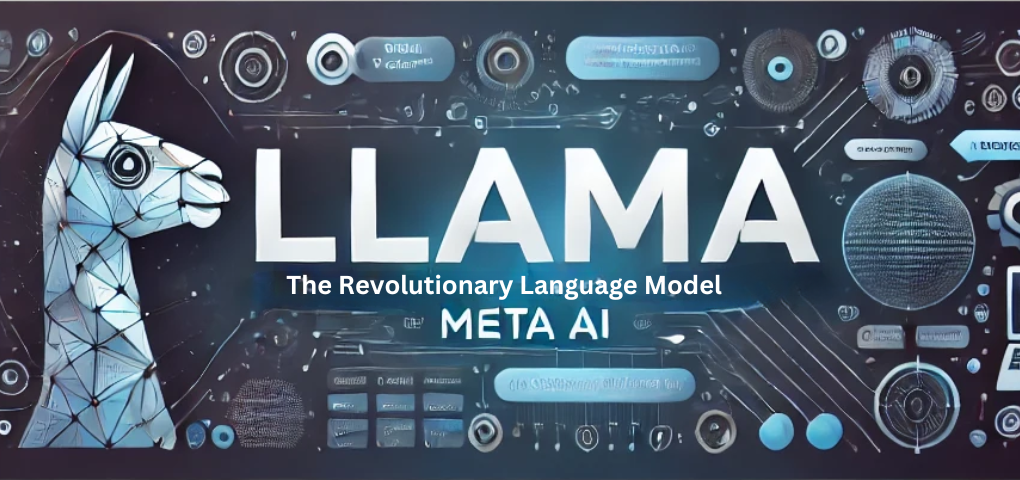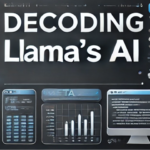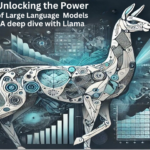In the ever-evolving landscape of artificial intelligence, Meta AI has made significant strides with its family of Large Language Models (LLMs) known as Llama. Since its initial release in February 2023, Llama has undergone several iterations, each more advanced and capable than the last. This blog post delves into the intricacies of Llama, exploring its development, models, services, and the impact it has had on the AI community.
The Genesis of Llama
Llama, an acronym for Large Language Model Meta AI, represents Meta AI’s foray into the realm of autoregressive large language models. The journey began with the release of Llama 1 on February 24, 2023. This initial version was made available to the research community under a non-commercial license, with access granted on a case-by-case basis. Despite the controlled release, unauthorized copies of the model were shared via BitTorrent, prompting Meta AI to issue DMCA takedown requests against repositories sharing the link on GitHub.
Evolution Through Iterations
Llama 1: The Foundation
Llama 1 laid the groundwork for what would become a series of increasingly sophisticated models. Trained on a dataset of 1.4 trillion tokens from publicly available sources, Llama 1 was available in various parameter sizes, ranging from 7 billion to 65 billion. The model’s performance on most NLP benchmarks exceeded that of the much larger GPT-3, making it a formidable contender in the AI landscape.
Llama 2: Expanding Horizons
On July 18, 2023, Meta AI, in partnership with Microsoft, announced Llama 2. This iteration introduced three model sizes: 7 billion, 13 billion, and 70 billion parameters. Llama 2 was trained on a dataset of 2 trillion tokens, with a focus on removing websites that often disclose personal data and upsampling trustworthy sources. The models were released with weights and were free for many commercial use cases, although some restrictions remained.
Code Llama: Specialization in Coding
Released on August 24, 2023, Code Llama was a fine-tuned version of Llama 2, specifically designed for coding tasks. Available in 7 billion, 13 billion, and 34 billion parameter versions, Code Llama was trained on an additional 500 billion tokens of code datasets, followed by 20 billion tokens of long-context data. This specialization made Code Llama a powerful tool for developers and researchers in the coding community.
Llama 3: Pushing Boundaries
April 18, 2024, marked the release of Llama 3, which came in two sizes: 8 billion and 70 billion parameters. Trained on approximately 15 trillion tokens of text from publicly available sources, Llama 3 included models fine-tuned on over 10 million human-annotated examples. This iteration also introduced virtual assistant features to Facebook and WhatsApp in select regions, showcasing the model’s versatility.
Llama 3.1: The Pinnacle
The latest version, Llama 3.1, was released on July 23, 2024. This iteration expanded the parameter sizes to 8 billion, 70 billion, and a staggering 405 billion. Meta AI’s testing showed that Llama 3.1 outperformed other leading models like Gemini and Claude in most benchmarks, solidifying its position as a top-tier language model.
Architectural Innovations
Llama’s architecture is based on the transformer model, a standard in language modeling since 2018. However, Llama incorporates several unique features that set it apart:
- SwiGLU Activation Function: Llama uses the SwiGLU activation function instead of the GeLU used in GPT-3.
- Rotary Positional Embeddings: This replaces the absolute positional embedding used in other models.
- Root-Mean-Squared Layer-Normalization: Llama employs this instead of the standard layer-normalization.
- Increased Context Length: Llama 3 increased the context length to 8k, compared to 4k in Llama 2 and 2k in Llama 1 and GPT-3.
Training and Data
Llama models are trained on vast datasets sourced from publicly available information. The training process involves several stages, including self-supervised learning and fine-tuning with human feedback. For instance, Llama 2 – Chat was fine-tuned on 27,540 prompt-response pairs created specifically for the project, using reinforcement learning with human feedback (RLHF) to enhance AI alignment.
Commercial and Research Applications
Llama’s versatility has led to its adoption in various commercial and research applications. For example, Zoom uses Meta Llama 2 to create an AI Companion that can summarize meetings, provide presentation tips, and assist with message responses. Additionally, the Meditron family of Llama-based models, fine-tuned on medical literature, has shown increased performance on medical-related benchmarks.
Future Prospects
Meta AI’s commitment to advancing Llama is evident in its plans for future iterations. According to the Q4 2023 Earnings transcript, Meta aims to continue releasing open-weight models to improve safety, iteration speed, and adoption among developers and researchers. Llama 5, 6, and 7 are already in the pipeline, promising even more advanced capabilities.
Conclusion
Llama represents a significant milestone in the development of large language models. From its inception to the latest iteration, Llama has consistently pushed the boundaries of what is possible in AI. With its robust architecture, extensive training, and wide range of applications, Llama is poised to remain at the forefront of AI research and development for years to come.
For more information, visit the official Llama website.
Note: This blog post is based on information available as of July 2024. For the latest updates, please refer to Meta AI’s official channels.


